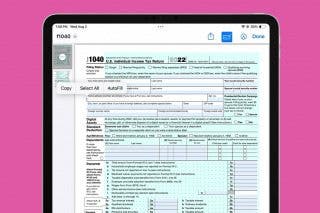How to Reset MacBook or Mac & 3 Other To-Dos before You Sell It
Learn how to factory reset a MacBook or Mac, plus the other crucial privacy steps to take before selling your computer.


You want your Mac to be in great shape before you sell it or give it away, so you'll need to know how to restore a Mac to factory settings (including how to reinstall macOS afterward), plus a few other important skills. Follow these simple steps to help you get top dollar for your old device and ensure your private data isn’t accessible to the new owner.
Related: What Is iCloud & How Does It Work?
1. Back Up Mac to Prevent Data Loss
Your Mac may be set up to back up automatically, but it is always a good idea to check the date of your most recent backup prior to resetting your Mac to ensure you won’t lose any data. Apple’s pre-installed Time Machine app is an easy way to back up your device, as long as you have an external hard drive handy. You can also save your files, pictures, music, and more in iCloud, though that often requires a paid subscription in order to have enough space to store everything you'll want on your new computer. In order to make the iCloud vs. Time Machine decision, it's best to weigh your Mac backup options first.
2. Sign Out of Everything Before You Factory Reset Mac
Be sure to sign out of all of your accounts, but especially those that hold your personal information. These include your Apple account, Messages, email, and any other password-protected profiles or apps that you're signed into on your computer. One of the more crucial accounts to sign out of and delete from your old Mac is iCloud, as this will automatically sign you out of the App Store, iMessage, and FaceTime. To sign out of and delete an iCloud account from a Mac:
- Open System Preferences.
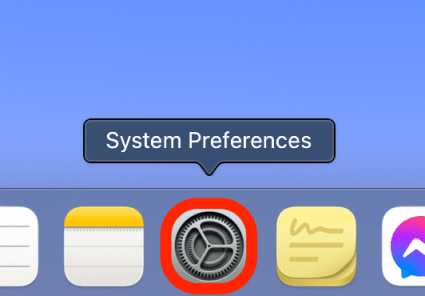
- Select Apple ID.
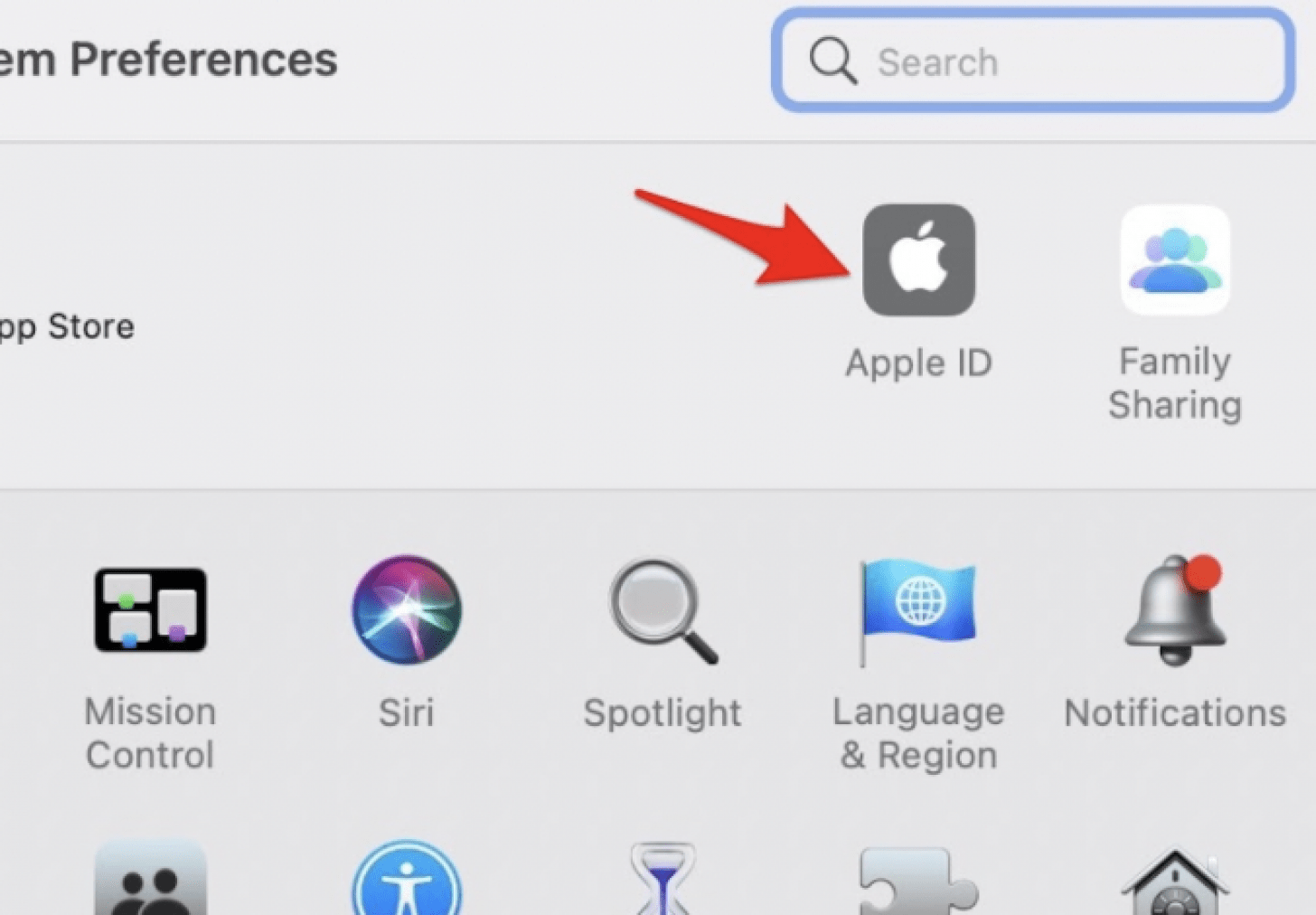
- Deselect Find My Mac.
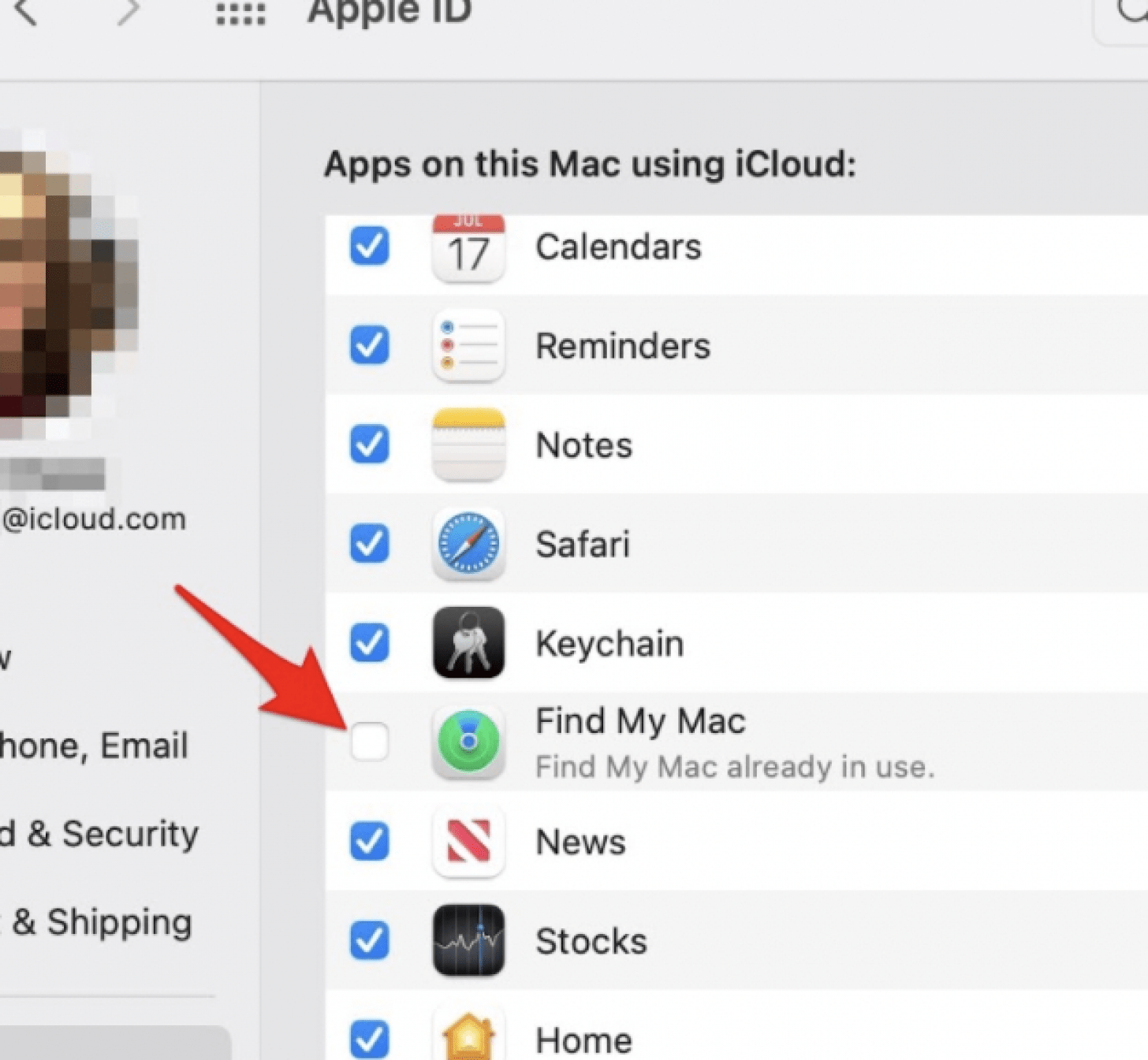
- Enter your password when prompted and click Continue.
- Your Mac may pop up a request to authenticate user. If this happens, enter your Mac password (not your Apple ID password) and click OK.
- Click Overview.
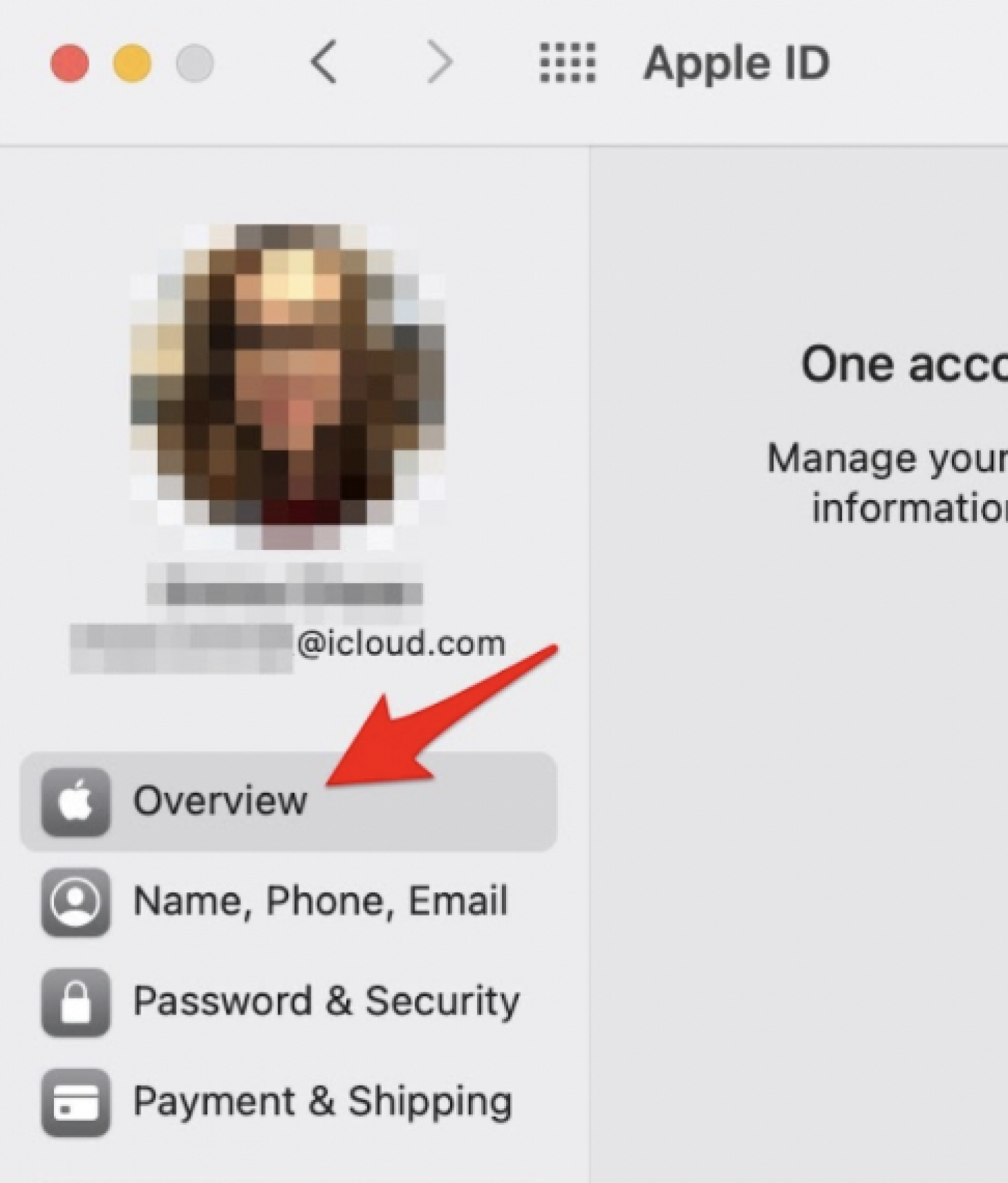
- Click Sign Out.

- Deselect all options that are currently selected.
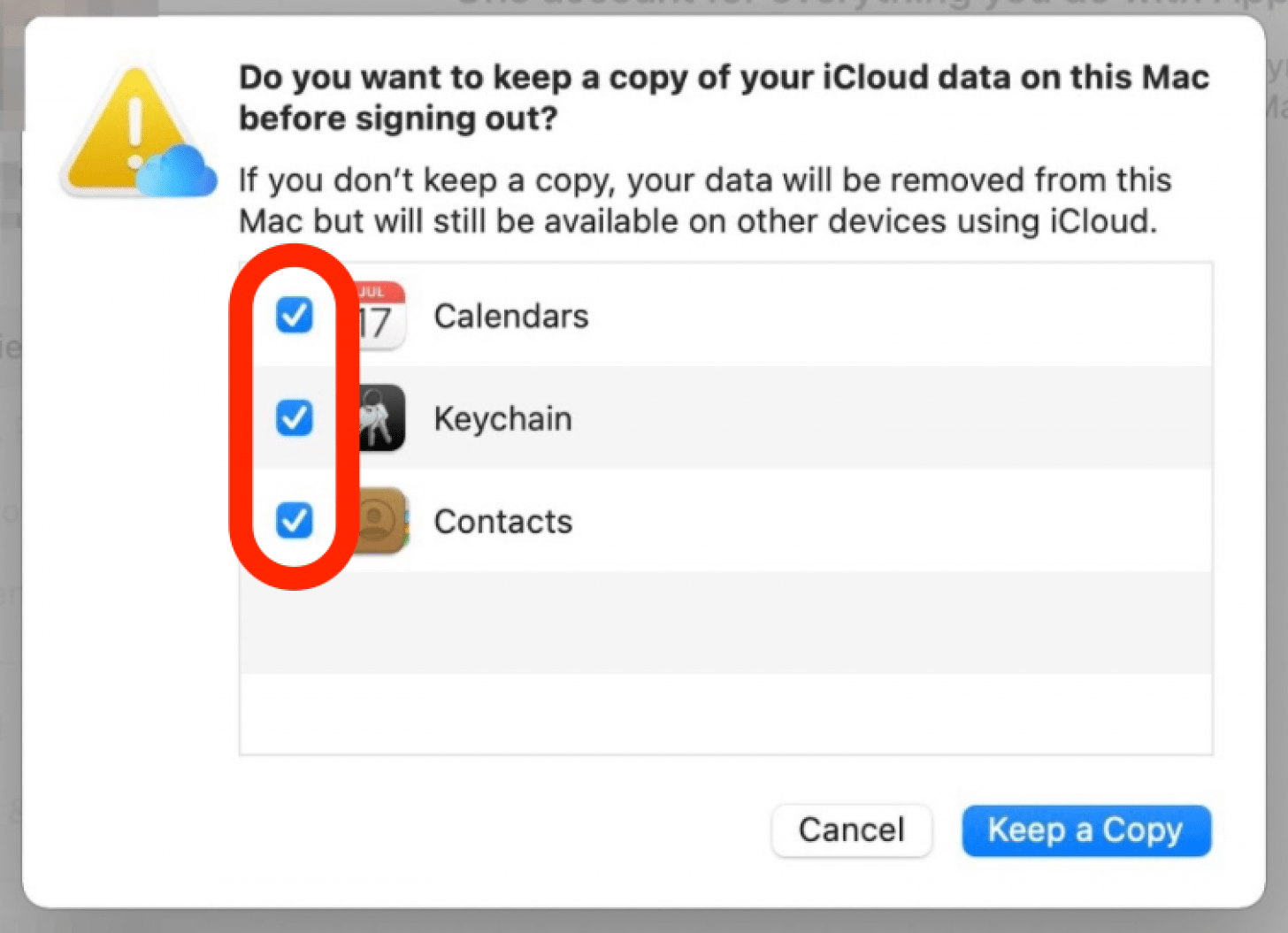
- Click Continue.
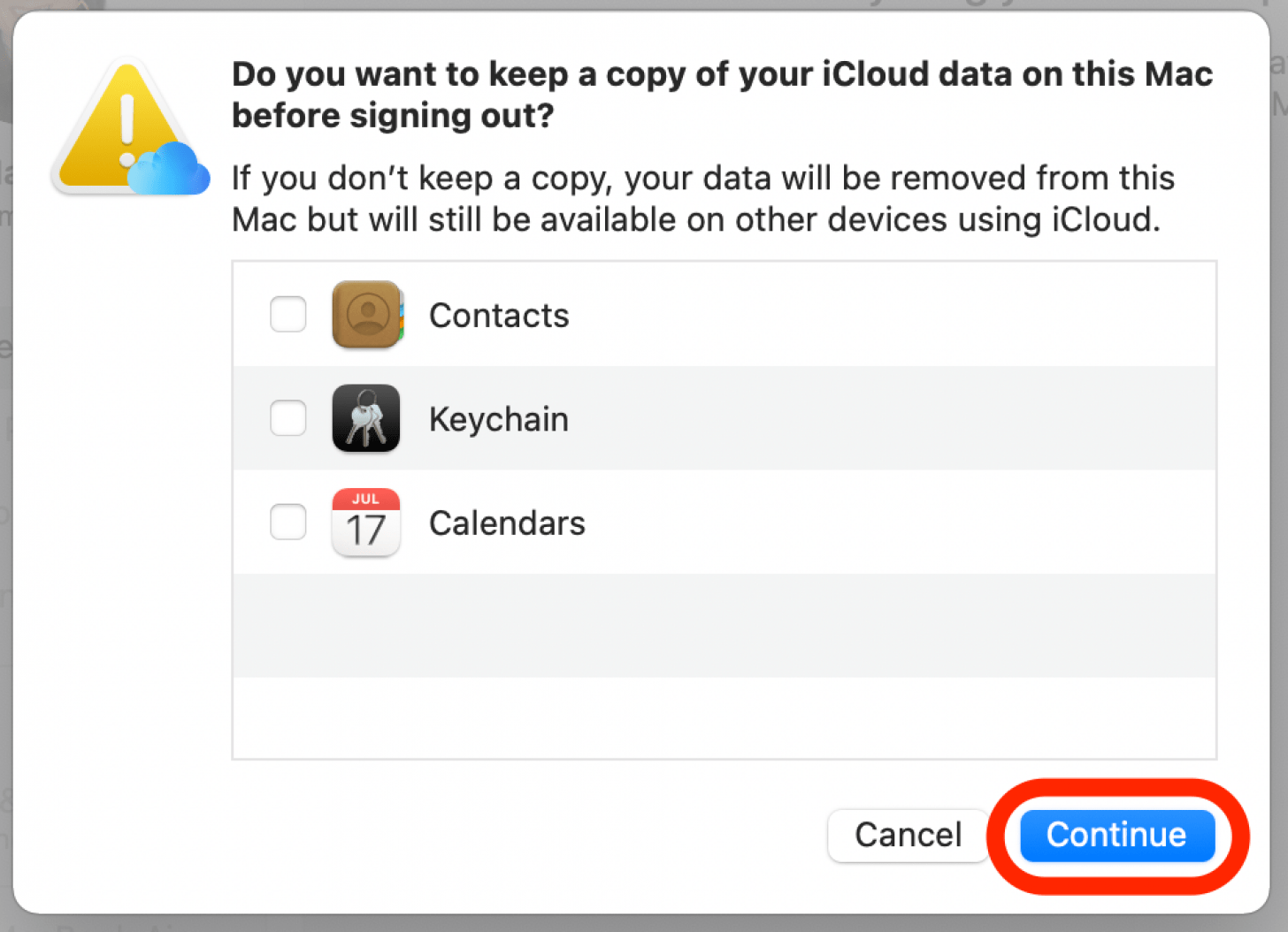
- Click Delete from Mac.
- If prompted, click Delete from Mac again.
Bonus: Removing all Bluetooth pairings is an optional step that may be helpful. Simply navigate to Bluetooth in System Preferences and click the X that appears when you hover over the device you wish to unpair.
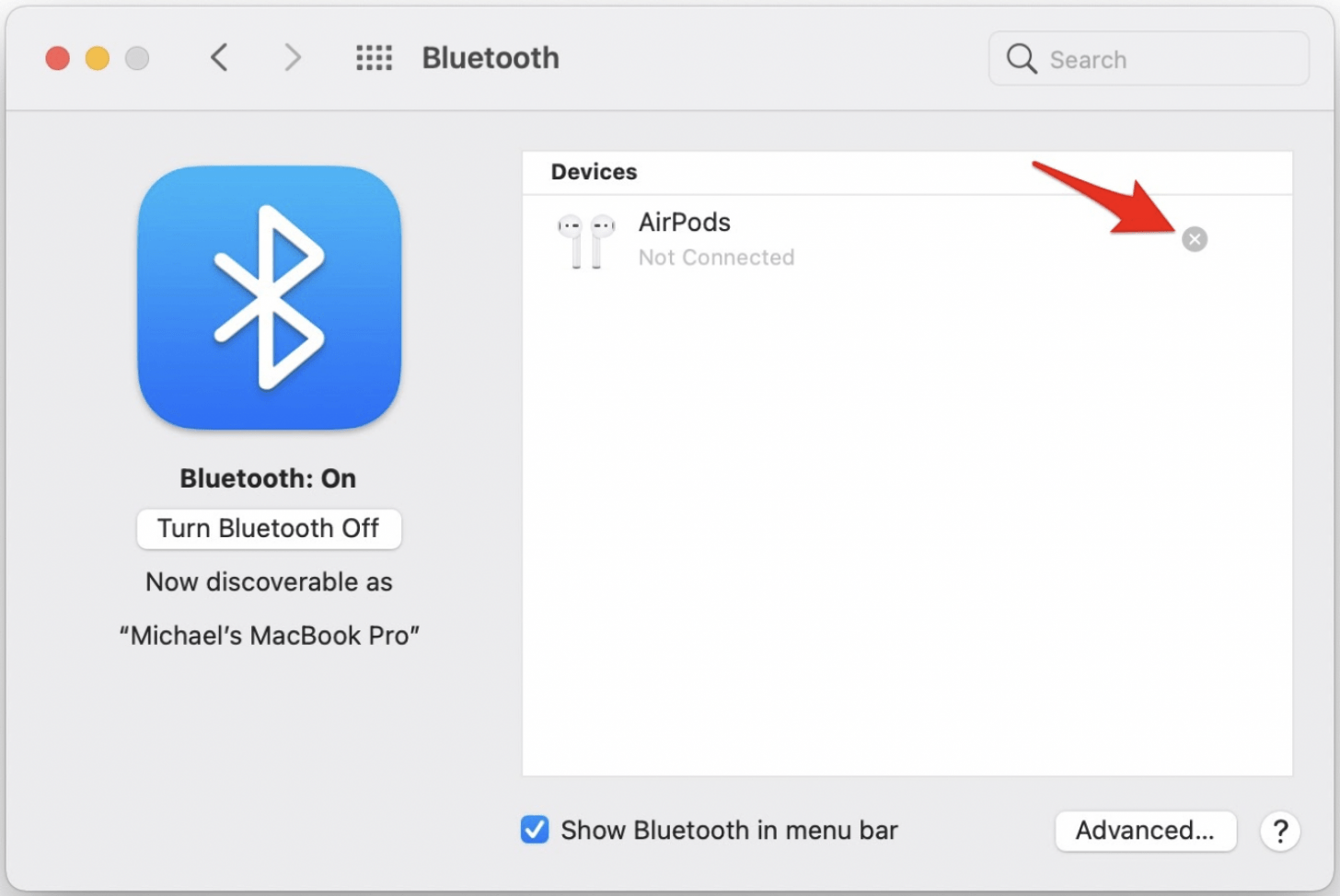
3. How to Reset Mac NVRAM to Clear User Settings
Before you factory reset the Mac, you'll want to reset NVRAM. This clears user settings and resets things like security features that you may have altered over the course of your use of the computer. It's a quick and simple process that you'll perform while the computer starts up, and since the computer will be off when you do this, it may be beneficial for you to print these instructions or pull them up on a secondary device (such as your iPhone) so that you don't miss any steps.
- Turn off your Mac.
- Be ready to press and hold the keys option+cmd+P+R, but don't press them yet.
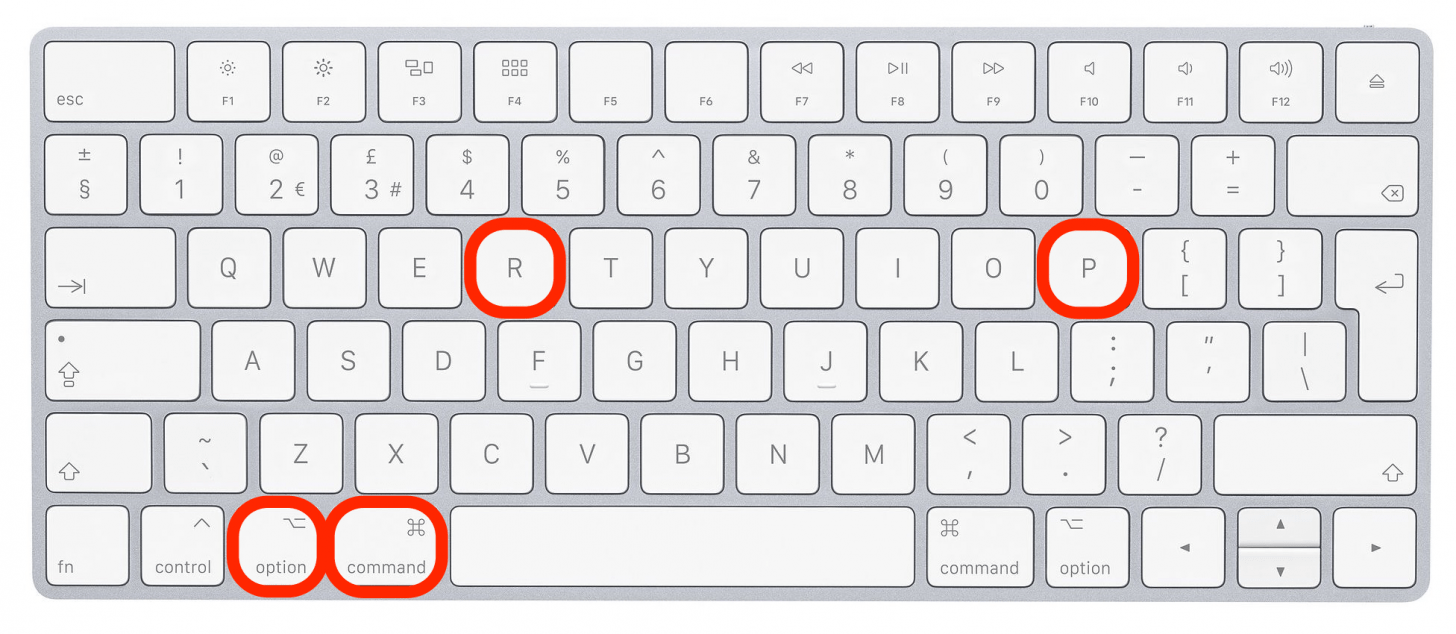
- Turn your Mac back on and immediately press and hold option+cmd+P+R for about 20 seconds.
- Release the keyboard shortcut keys after the 20 seconds have elapsed.
If the Mac logo disappears and reappears, don't be alarmed! Your Mac should restart as normal, but certain settings will have been reset. Next, as long as you've backed up all data that you need, you can move on to the next section to learn how to restore a Mac to factory settings.
4. How to Factory Reset MacBook or Mac & Reinstall MacOS
To remove the rest of your data, you will need to erase your hard drive, which is the same as doing a factory reset on a MacBook or Mac. It may be beneficial for you to print these instructions or pull them up on a secondary device (such as your iPhone) so that you don't miss anything. I'm sorry to say that many of these steps cannot be accompanied by images since they involve system processes that can't be screenshot, but the steps themselves should be sufficient to guide you.
First, choose which kind of Mac you want to reset to factory settings:
How to Factory Reset MacBook or Mac: Intel Processor
If the mac you're selling is older than those released in late 2020, it'll have an Intel processor instead of Apple's M1 processor. If you're still unsure and the computer in question is a MacBook, we can help you identify which MacBook you have. It's best to update macOS to the latest compatible version before doing this.
Here's how to reset Macs with Intel chips and reinstall mac OS if you choose to do so:
- Turn off your Mac.
- Turn on your Mac, and while the Mac is restarting, hold down the keyboard combination cmd+R until you see the Mac logo or another icon or image appear.
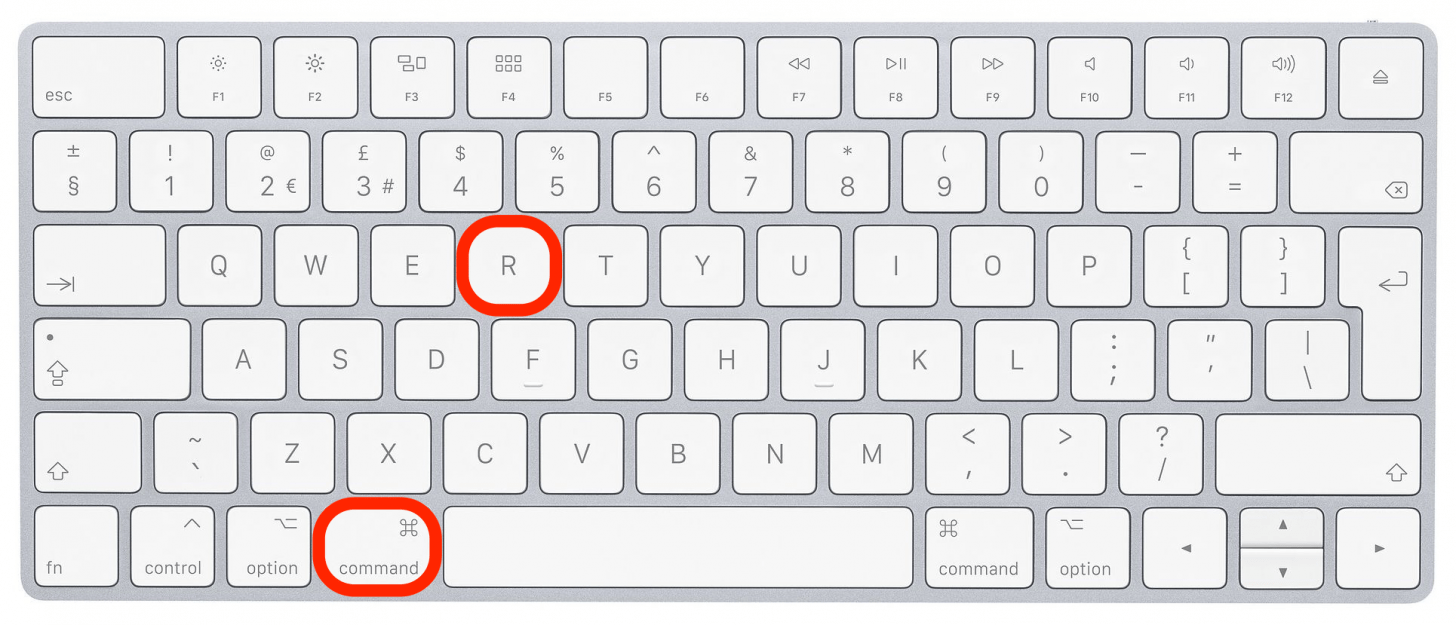
- If requested, log in as administrator.
- A utilities window will appear.
- Click on Disk Utility.
 Image courtesy of Apple
Image courtesy of Apple
- Select Macintosh HD in the sidebar underneath the Internal heading (or the name of your disk if you've changed its name from Macintosh HD).
- If you don't see Macintosh HD or your chosen disk name, shut down your computer, unplug all external devices (you can leave things like mouse and keyboard plugged in if necessary), and start these steps over.
- Once you have selected the drive, click Erase in the toolbar.
- Make sure the Name section says "Macintosh HD."
- The Format drop-down menu should say "APFS" or "Mac OS Extended (Journaled)." This is based on system recommendation, so you can leave it as long as one of the two is showing up there.
- If you have a button called Erase Volume Group, click it. If not, click Erase.
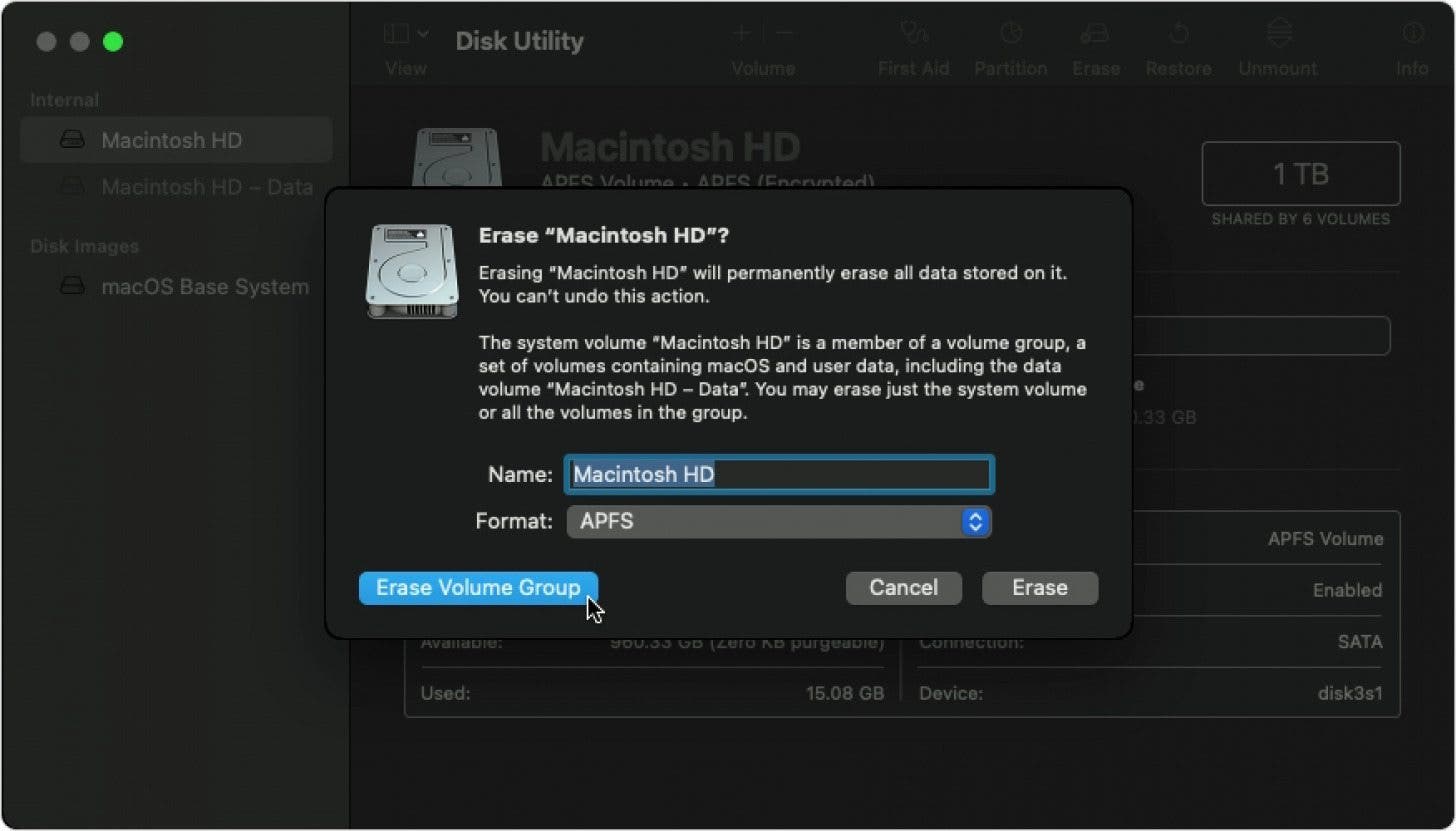 Image courtesy of Apple
Image courtesy of Apple
- If prompted, type in your Apple ID.
- Once the erase process has completed, repeat these steps for any other disk volumes under the Internal heading (you'll only have these if you previously added disk volumes using Disk Utility).
- Exit the Disk Utility menu when you're done.
- To start back up and reinstall macOS, click Reinstall macOS in the utilities window.
- Click Continue.
- Follow the on-screen instructions to reinstall macOS on the factory-reset MacBook or Mac.
How to Factory Reset MacBook or Mac: M1 (Apple Silicon) Processor
If you are selling your M1 MacBook or iMac, the process to factory reset the Mac will be slightly different than the one for a Mac with an Intel processor.
Important: Before you start this process, you'll need to make sure you're using the most current macOS version. If you're not, update macOS on the computer you intend to sell before continuing. This ensures that the factory reset is performed using the most current software, which makes the process smoother and more reliable.
To factory reset a Mac with an Apple silicon processor and reinstall macOS if you choose to do so:
- Turn off your Mac.
- Press and hold the power button to turn your Mac back on, and continue to hold the button until you see a window with startup options.
- Click Options.
- Click Continue.
 Image courtesy of Apple
Image courtesy of Apple
- If requested, log in as administrator.
- If requested, enter the Apple ID and password that was most recently used with the Mac you're resetting.
- A utilities window will appear.
- Click on Disk Utility.
 Image courtesy of Apple
Image courtesy of Apple
- Locate (but don't yet click on) Macintosh HD in the sidebar underneath the Internal heading.
- If you don't see Macintosh HD (or your chosen disk name if you previously renamed the Macintosh HD disk), shut down your computer, unplug all external devices except necessary ones like mouse and keyboard, and start these steps over.
- Now, if you see more disk volumes other than Macintosh HD or Macintosh HD - Data under the Internal section of the sidebar, select them each one by one and click the minus button in the toolbar. This will delete each additional volume. (You'll only have additional volumes if you previously added them manually using Disk Utility, so it's not common)
- Do not delete any disks listed under the External the Disk Images sections.
- Next, click on Macintosh HD.
- Click the erase icon in the toolbar.
 Image courtesy of Apple
Image courtesy of Apple
- Make sure the Name section says "Macintosh HD."
- The Format drop-down menu should say "APFS."
- Click Erase Volume Group.
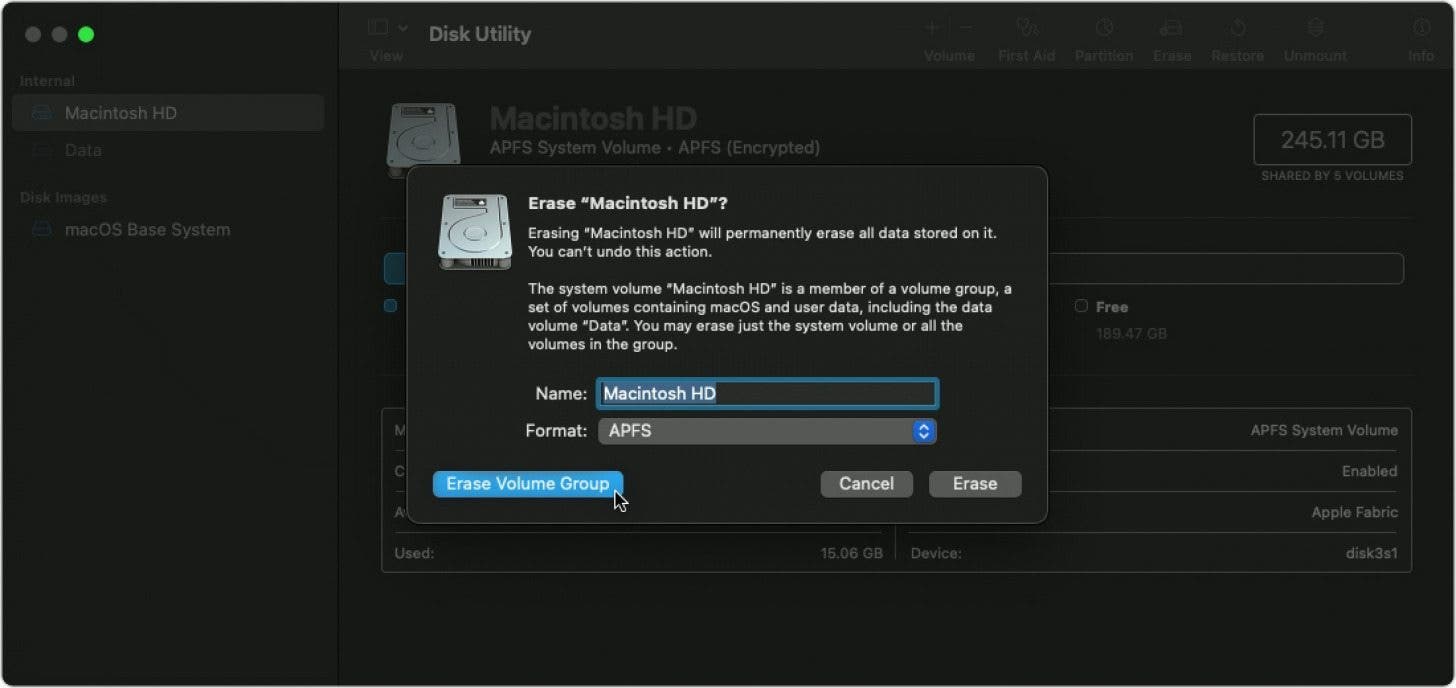 Image courtesy of Apple
Image courtesy of Apple
- If prompted, type in your Apple ID.
- When the Mac starts back up, you'll be prompted to follow on-screen instructions to choose a language.
- The Mac will begin activation, which will require a stable internet connection.
- To set up Wi-Fi access in order to allow for activation, either connect a network cable or click on the Wi-Fi icon in the Menu bar to connect to the internet.
- Once the Mac has activated, click Exit to Recovery Utilities.
- To start back up and reinstall macOS, click Reinstall macOS in the utilities window.
- Click Continue.
- Follow the on-screen instructions to reinstall macOS on the factory-reset MacBook or Mac.
It may seem like a complicated process to sell a MacBook or Mac, but we think it's worth the effort because of how well Macs retain their value and remain relevant much longer as compared to their PC counterparts. If you follow these steps, you can be confident that you will protect your personal information and leave a positive impression on your Mac’s new owner.

Emma Chase
Emma Chase is a freelance writer for iPhone Life. She has her Bachelors degree in Communication from the University of Northern Iowa. Emma has worked in many sectors in her professional career, including the higher education, finance, and nonprofit. Emma lives in small-town Iowa with her husband and two children. When she’s not geeking out over the newest Apple product or wrangling her kids, Emma enjoys a good book, crocheting, and trying new foods.
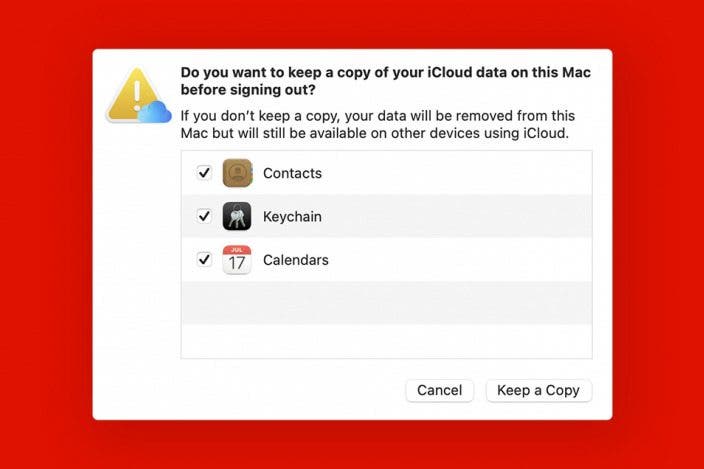
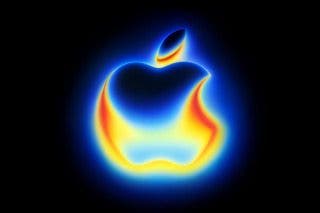
 Amy Spitzfaden Both
Amy Spitzfaden Both
 Rhett Intriago
Rhett Intriago
 Ashleigh Page
Ashleigh Page
 Leanne Hays
Leanne Hays
 Olena Kagui
Olena Kagui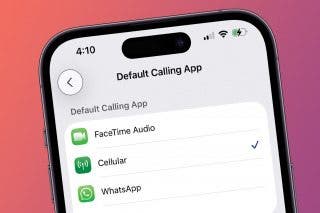
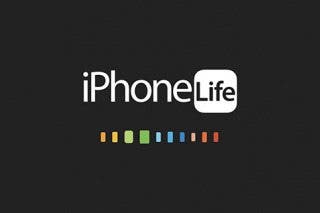
 Susan Misuraca
Susan Misuraca
 Brian Peters
Brian Peters





